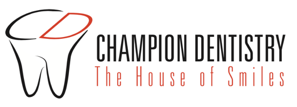The Role Of Prosthodontics In Diagnosing And Treating Sleep Apnea
Blog The Role Of Prosthodontics In Diagnosing And Treating Sleep Apnea
Introduction
Sleep apnea is a prevalent sleep disorder characterized by repetitive episodes of partial or complete obstruction of the upper airway during sleep, leading to disrupted breathing. Left untreated, it can contribute to many health complications, including hypertension, heart disease, and stroke. Prosthodontics, a specialized branch of dentistry, plays a crucial role in diagnosing and treating this disorder. This blog post will explore the role of prosthodontics in diagnosing and treating sleep apnea.
I. The Connection Between Sleep
Sleep apnea is closely related to oral health due to the nature of the disorder. It primarily involves the blockage of the upper airway, which is often associated with the position of the tongue, soft palate, and other oral structures. Prosthodontists are dental specialists who diagnose, treat, and maintain oral function, comfort, appearance, and health. As such, they possess in-depth knowledge of the oral cavity and its relationship to the airway, making them uniquely qualified to diagnose and manage sleep apnea.
II. Diagnosing Sleep Apnea: The Role of the Prosthodontist
While a sleep specialist typically diagnoses sleep apnea, prosthodontists can play a vital role in identifying potential signs of the disorder during routine dental examinations. They are trained to recognize symptoms such as:
Tooth grinding (bruxism) and worn tooth surface
Enlarged tongue or soft palate
Receding chin or abnormal jaw position
Narrow or high-arched palate
Signs of chronic mouth breathing
III. Treatment Options: Prosthodontic Interventions for Sleep Apnea
Once sleep apnea is diagnosed, prosthodontists can offer various treatment options to help manage the condition. These include:
1. Oral Appliance Therapy (OAT): One of the most common prosthodontic interventions for sleep apnea is the prescription and fitting of custom-made oral appliances. These devices, such as mandibular advancement devices (MADs) and tongue-retaining devices (TRDs), work by repositioning the lower jaw or tongue to maintain an open airway during sleep. They are non-invasive, portable, and often preferred by patients over other treatments like continuous positive airway pressure (CPAP) therapy.
2. Maxillofacial Prosthetics: Patients may benefit from maxillofacial prosthetic interventions, such as distraction osteogenesis or genioglossus advancement in more severe cases. These procedures involve surgically repositioning the jaw or tongue base to increase airway space and reduce obstruction.
3. Combination Therapy: For some patients, combining treatments may be necessary to achieve optimal results. That can include using an oral appliance alongside CPAP therapy or combining prosthodontic treatment with weight loss and lifestyle changes.
IV. The Importance of Long-Term Management
Prosthodontists play a critical role in the long-term management of sleep apnea, as regular follow-ups and adjustments to oral appliances are necessary to ensure ongoing effectiveness. Furthermore, they can monitor patients' oral health and guide how to maintain the function and longevity of their oral devices. This constant care is essential for patients to experience continuous relief from sleep apnea symptoms and minimize the risk of complications.
Conclusion
At Champion Dentistry, we provide comprehensive prosthodontic services to help you achieve a healthy, functional, and aesthetically pleasing smile. Our experienced team utilizes state-of-the-art technology and advanced techniques to address many dental concerns, including tooth loss, jaw disorders, and sleep apnea. Our prosthodontic services include dental implants, dentures, crowns, bridges, and oral appliance therapy. By offering personalized care tailored to your needs, we strive to restore your oral health and improve your quality of life—Trust Champion Dentistry is your partner in achieving a confident and vibrant smile.

